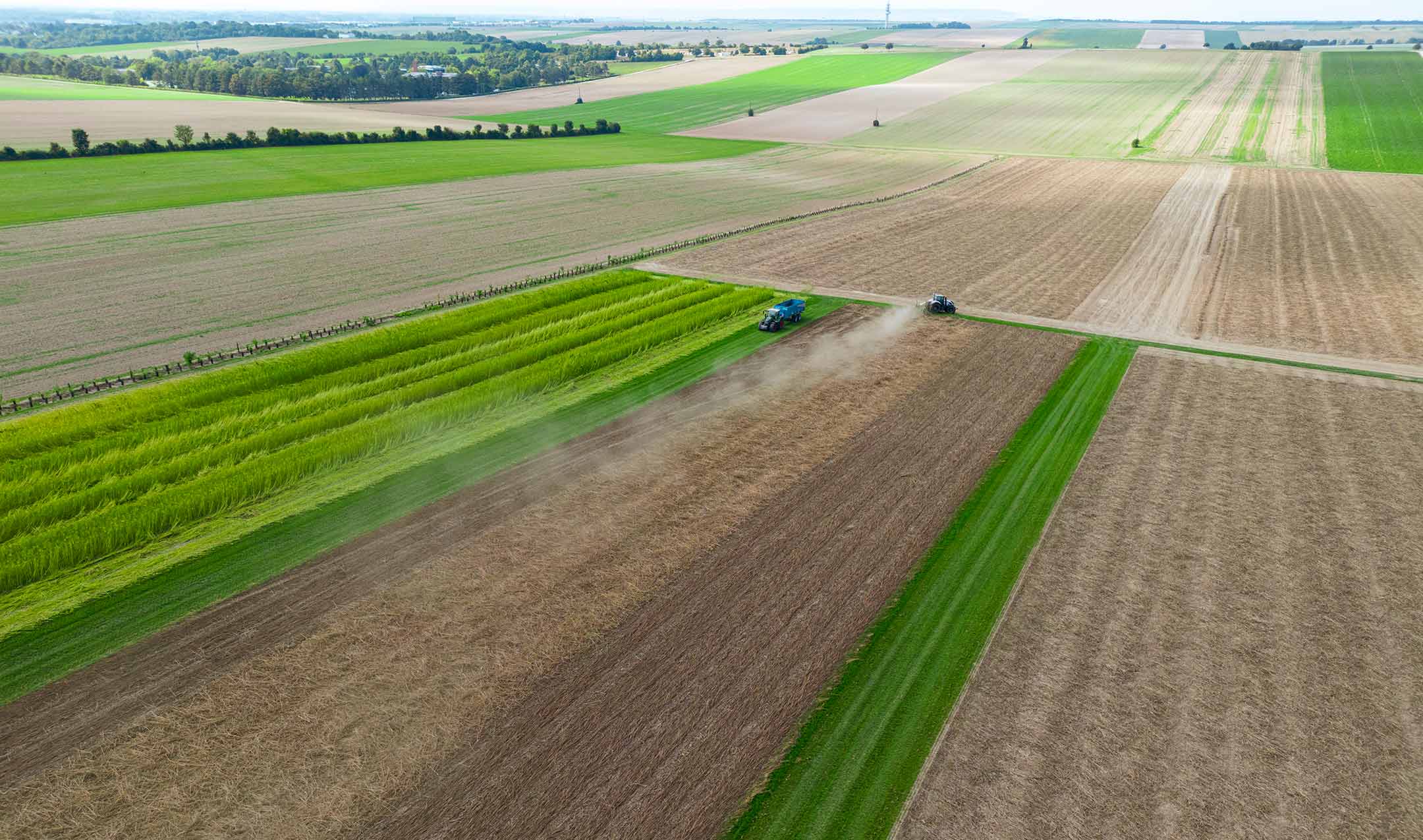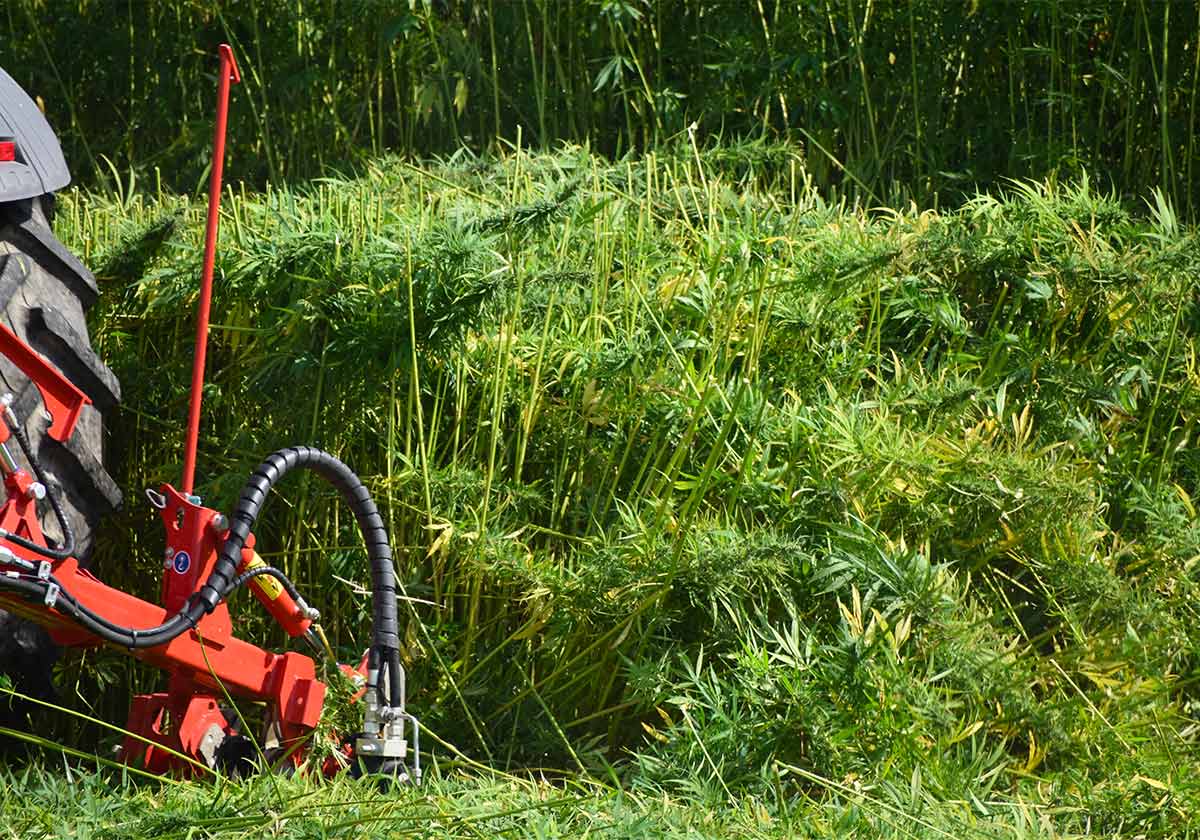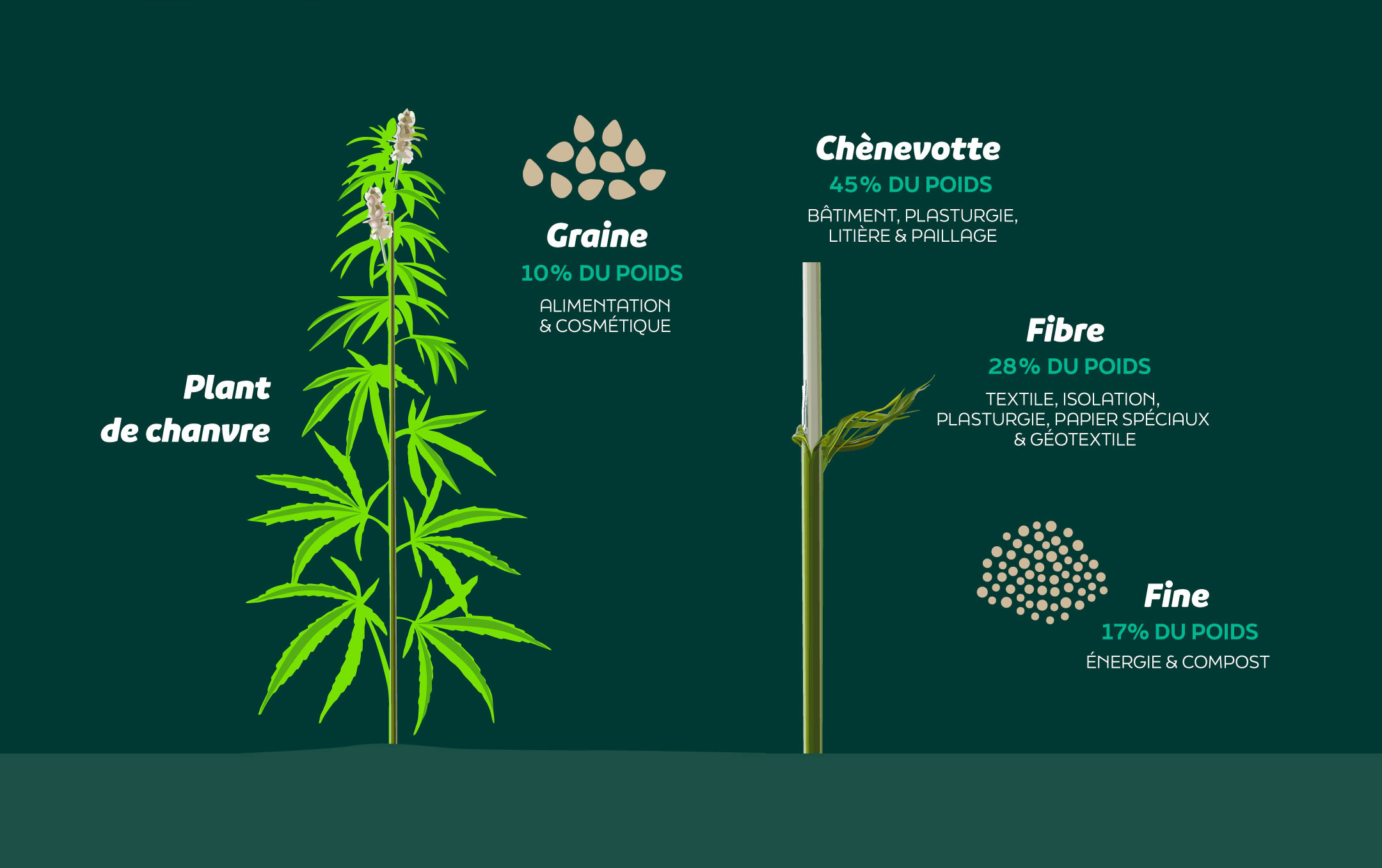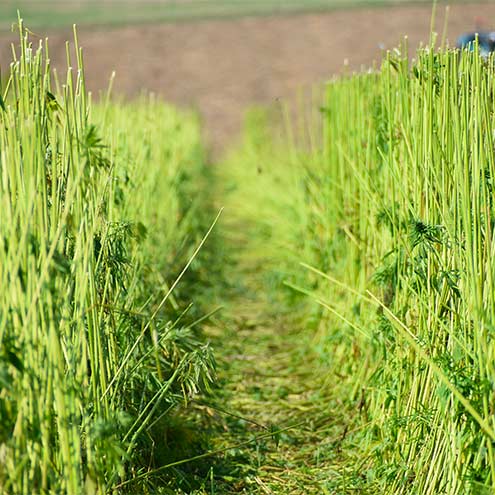
CULTIVER
LE CHANVRE
de la culture
du chanvre

culture du chanvre




Le chanvre industriel, cultivé dans de nombreuses régions, s'adapte à divers types de sols et climats. Semé en avril-mai, il ne nécessite aucun traitement phytosanitaire et peut être récolté à deux périodes différentes, selon le contrat établi avec la chanvrière. La récolte peut se faire en mode non battu dès la mi-août pour obtenir de la fibre technique nécessitant du rouissage, ou en mode battu courant septembre, permettant de récolter à la fois la graine et la fibre pour des applications nécessitant moins de rouissage.
Le rouissage est une étape cruciale pour la qualité du défibrage, des fibres et, par conséquent, du produit final. Pendant une période pouvant aller jusqu'à huit semaines, le chanvre est laissé au sol pour permettre aux micro-organismes de se développer sous l'effet alterné de la pluie et du soleil. Ces micro-organismes décomposent les pectines qui lient les fibres de chanvre entre elles.
cultiver le chanvre ?
Pour découvrir les techniques culturales et les spécificités de la culture du chanvre, téléchargez le Guide de culture complet.
De culture
responsable
Et 100% Française
La filière chanvre répond parfaitement aux trois critères de durabilité : l'écologie, le social et l'économie. Cette culture, exempte de produits phytosanitaires, contribue à réduire l'Indice de Fréquence de Traitements phytosanitaires (IFT) des exploitations. Les producteurs s'engagent à contractualiser avec les chanvrières et alimentent une industrie innovante sur leur territoire. Les transformateurs, quant à eux, s'engagent à limiter les distances entre les producteurs et les usines, favorisant ainsi le développement de l'emploi local.

avantageux

Les plants de chanvre, grâce à leur diversité génétique, s'adaptent bien à l'évolution de leur environnement et présentent une bonne résistance aux attaques de ravageurs et de pathogènes. Aucun produit phytosanitaire n'est nécessaire entre la plantation et la récolte. Leur croissance rapide étouffe les adventices. Grâce à un système racinaire profond, ils résistent à la sécheresse, rendant l'irrigation inutile.
Le chanvre ne nécessite aucune intervention entre le semis et la récolte, ce qui permet de limiter la charge de travail pendant les périodes intenses de travaux de grandes cultures. Ses besoins en azote sont modérés, avec une moyenne de 100 unités par hectare.


Le chanvre s'adapte à tous types de sols et permet de valoriser les terres à faible potentiel. Il laisse un sol propre et structuré, et est un excellent précédent pour les céréales dont il améliore les rendements. Son couvert dense favorise la biodiversité notamment les auxiliaires de culture tels que les carabes, araignées et coccinelles, essentiels pour lutter contre les ravageurs.
100% valorisée

Dans le chanvre, tout est valorisé sans générer de déchets. Une fois transformés, graines, tiges, fibres et même les poussières fines trouvent des utilisations multiples et vertueuses. Découvrez les différents processus de transformation et les nombreuses qualités des matériaux issus de cette plante exceptionnelle.
du chanvre
culturale réussie

Jérôme Gallois (48 ans) est installé depuis 2001 sur l’exploitation familiale de 200





et votre exploitation ?
D’un point de vue agronomique, c’est une culture qui structure bien le sol et qui constitue un bon précédent. L’intérêt est de pouvoir semer le blé qui suit en direct sans travailler le sol. Poussant rapidement si les conditions sont bonnes en termes de préparation du lit de semence et de météo, le chanvre étouffe les adventices et ne nécessite pas de désherbage, ce qui est un atout à la fois économique et environnemental.
Avec des rendements de 7 à 8 t/ha de paille jaune auxquels s’ajoute le chènevis, les marges sont intéressantes comparées aux autres cultures, même si les coûts de production sont actuellement en hausse. Enfin, sur le plan sociétal, le chanvre est très intéressant car il permet de produire du papier, du textile et de nombreux autres produits biosourcés (biocomposites, isolants, béton de chanvre…).
et pour quels débouchés ?
Je produis à la fois de la paille jaune pour la production de papiers spéciaux, de la paille semi-rouie et rouie pour des applications techniques (biocomposites pour des plastiques par exemple) et le marché du textile. La paille jaune ou semi-rouie permet également de récolter le chènevis pour l’oisellerie et l’alimentation humaine.
Un contrat avec un volume total de paille à livrer est signé avec la coopérative pour cinq ans mais chaque année, nous pouvons choisir les quantités à livrer en paille jaune, semi-rouie ou rouie.
de paille jaune pour la papeterie ?
Pour produire de la paille jaune tout en récoltant la graine (mi-septembre), il faut implanter des variétés plus précoces que pour la paille rouie qui nécessite une fauche (début août) avant la formation des graines. Pour récolter la graine, j’utilise une moissonneuse-batteuse en passant le plus haut possible. Dans la foulée, je coupe les tiges avec une faucheuse double lame. Quand les tiges sont suffisamment jaunes (au bout de trois à quatre jours), je fane pour les retourner puis je mets la paille en andains pour pouvoir la presser en balles. Le stockage à la ferme est ensuite obligatoire.
La coopérative procède à l’enlèvement par camion au fur et à mesure de ses besoins. Je récolte en moyenne 7 à 8 t/ha de paille jaune (contre 9 à 10 t/ha pour la paille rouie) et 1 100 kg/
trois structures représentatives du chanvre ?
Je me suis engagé au sein du conseil d’administration de La Chanvrière de l’Aube pour participer à sa gestion et à sa stratégie et veiller à l’attractivité de la culture pour le producteur. Cette prise en compte des intérêts des producteurs m’a ensuite conduit à m’engager dans la
Du chanvre
Le chanvre (Cannabis sativa L.) se distingue du Cannabis indica, interdit en France, par son faible taux de
De plus, l’interprofession souhaite différencier les usages : "Chanvre" pour les applications industrielles et alimentaires et "Cannabis" pour les marchés thérapeutiques et de bien-être exploitant le cannabidiol (CBD), dont elle ne s’occupe pas. Le chanvre est cultivé sur le modèle des grandes cultures, tandis que la culture du cannabis se rapproche de l’horticulture.
la culture du chanvre
Vous souhaitez vous lancer dans la culture du chanvre et avez besoin d’informations pour vous aider à mettre en place votre projet ?
Répondez au questionnaire ci-dessous et accédez aux ressources et aux démarches pour lancer votre projet de culture du chanvre.
En France, la distance moyenne entre un producteur et sa chanvrière est de 50km. Au delà de 100km, la possibilité d’un partenariat peut-être compromise.
Route de Grange l’Evêque
10180 SAINT LYE - FRANCE
+33 (0)3 25 92 31 92
contact@lachanvriere.com site internet : https://lachanvriere.com/
